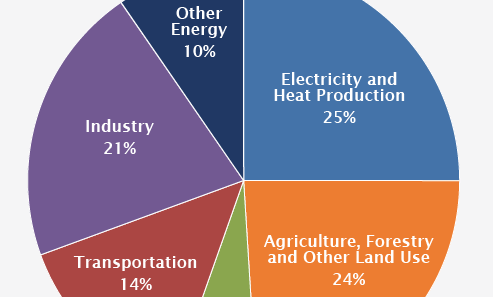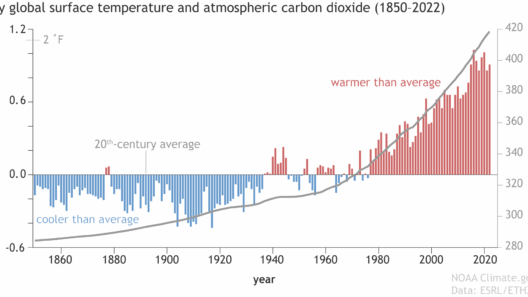In the intricate web of our existence, every choice we make reverberates through the fabric of the environment. Diet, often viewed merely as a matter of personal preference or health, surfaces as a pivotal trajectory towards mitigating global warming. The notion that our food choices have a tangible impact on the planet’s climate is not just a fleeting idea; it is a fundamental reality that demands our attention and action.
The agricultural sector, often likened to a double-edged sword, is both a fundamental source of nourishment and a significant contributor to greenhouse gas emissions. It is important to unearth how different dietary patterns influence not just individual health, but the health of our planet. When we partake in the act of eating, we engage in a profound dialogue with the Earth, trading choices for sustainability or consumption for conservation.
At the heart of this discourse lies the stark evidence: livestock production alone is responsible for approximately 14.5% of global greenhouse gas emissions. This figure can be awe-inspiring, evoking the image of a great shadow cast over the earth—a monstrous entity that siphons the vitality of our planet. Ruminants like cattle produce methane, a gas with a potency over twenty times that of carbon dioxide within a century. This is not merely a statistic, but a clarion call to re-evaluate our consumption habits.
Vegetables and grains, in contrast to meat, present a compelling alternative. Cultivating plants typically requires fewer resources, including water and land, while producing a fraction of emissions compared to livestock farming. Envision a verdant field of wheat swaying gently in the breeze, unencumbered by emissions. Consumption of plant-based diets invites a renewable exchange; the land renews itself, promoting biodiversity and fostering resilience within ecosystems. It’s a harmonious dance of natural cycles, a stark contrast to the frayed edges of industrial animal farming.
Furthermore, food transportation and processing contribute significantly to the ecological footprint. Global trade networks stretch across continents, wrapping around the globe like a chaotic tapestry, laden with fossil fuels. The carbon footprint of our meals often exceeds our understanding. A tomato cultivated in a nearby farm encapsulates a far lower carbon cost than one harvested in a far-off land and shipped thousands of miles. The shift towards local sourcing can substantially lessen this burden, nurturing communities and bolstering local economies.
Food waste emerges as another insidious villain in this narrative. Approximately one-third of all food produced for human consumption goes uneaten, contributing to wasted resources and needless emissions. The fruits of labor and the toil of farmers don’t just vanish in vain; they descend into landfills, where they decompose and release methane. Redefining our relationship with food should include embracing practices such as careful meal planning, preservation techniques, and consumption of leftovers. Imagine transforming scraps into sumptuous meals—a veritable alchemy of sustainability. Such conscientious practices not only save money but can significantly diminish our individual and collective carbon footprints.
Examining the broader strokes of dietary trends reveals the rise of plant-based and flexitarian diets as an appealing avenue for change. These diets eschew the excessive reliance on meat while simultaneously encouraging the consumption of a diverse array of fruits, vegetables, legumes, and grains. This doesn’t imply a monastic commitment to vegetarianism; rather, it reflects a modern approach to balance. A flexitarian lifestyle embodies the philosophy that every meal is an opportunity to harness ecological consciousness. It’s about choices, and as with all choices, some resonate more powerfully than others.
While discussing dietary impacts, one cannot overlook the transformative potential of sustainable agriculture practices. Regenerative farming techniques, emphasizing soil health, crop diversity, and animal welfare, seek to turn the tide of climate change by sequestering carbon in the ground and fostering resilient ecosystems. Picture a field alive with insects, diverse plants, and holistic management of natural resources—a veritable beacon of hope warming the climate’s icy grip.
Education plays a quintessential role in fostering a deeper understanding of the intricacies of food systems. Awareness can ignite curiosity and inspire action; this is where the true power resides. Community initiatives focused on imparting knowledge about sustainable practices can transform neighborhoods into hubs of eco-literate citizens. Consider the metaphor of a small seed; with nurturing and care, it evolves into a robust tree, providing shade and sustenance for generations. This is the kind of legacy we should strive toward, where future generations inherit not just a planet, but a thriving ecosystem.
As individuals entwined in this collective voyage, our choices are the sparks that can ignite broader societal changes. A collective movement towards conscious eating patterns can instigate monumental shifts in demand, influencing producers and policymakers alike. Engaging in dialogues with our local representatives about sustainable initiatives or advocating for policies that promote plant-based foods can fuel momentum for a paradigm shift.
The tapestry of global warming is woven together by climate, agriculture, and our collective dietary choices. The intricate interplay of these elements underscores the power of food as more than mere sustenance. It serves as a poignant reminder that within the seemingly mundane act of eating, we wield the remarkable ability to cultivate positive change. By embracing dietary patterns that honor the planet’s well-being, we not only nourish ourselves but also nourish the Earth—embarking together on an exhilarating journey toward a more sustainable future.
In conclusion, choosing a diet that aligns with sustainable practices is akin to planting the seeds of change in the soil of tomorrow. Let us embrace the myriad of options available, the vibrant colors of vegetables, the hearty grains, and the pulses that can nourish both body and soul. As we savor every bite, we can be the architects of a greener, healthier planet—one meal at a time.







